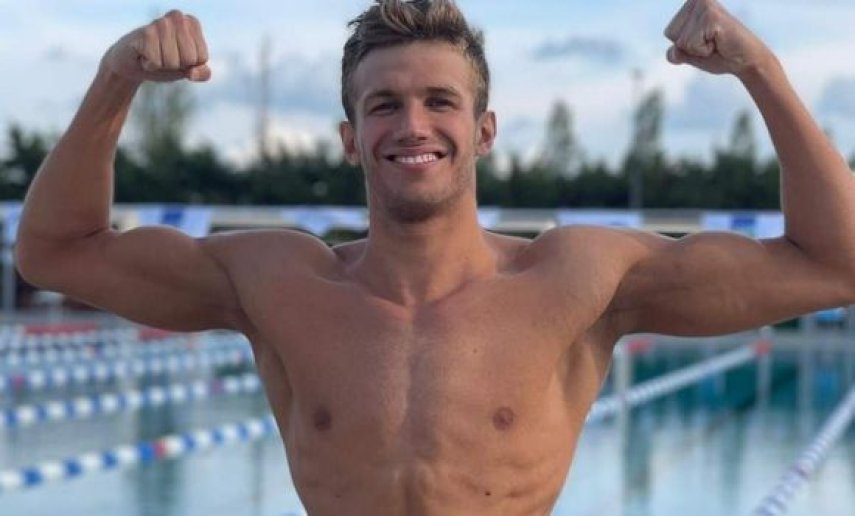سيساعدك الذهاب للسباحة في حمام السباحة على تهدئتك في يوم حار ، ولكن يمكن أن يساعدك أيضًا على تطوير قوة العضلات والقدرة على التحمل. السباحة هي تمرين لكامل الجسم يعمل على تناغم كل مجموعة عضلية رئيسية في جسمك. تركز كل ضربة من الضربات المختلفة على عضلات مختلفة ، لذا فإن استخدام مزيج من انواع السباحات عند السباحة سيسمح لك بالشعور بالحرق – والحصول على التناسق التي تريده – بشكل أسرع من العديد من التمارين على الأرض.
ارسم طريقك إلى عضلات أقوى
من أجل تقوية العضلات ، عليك العمل ضد المقاومة. عندما تسبح ، يوفر الماء المقاومة التي يتعين على عضلاتك محاربتها أثناء ضربات الرجلين والذراعين لدفع جسمك عبر حوض السباحة. في الواقع ، يكون الماء أكثر مقاومة للهواء والأرض ، لذلك يتعين على عضلاتك أن تعمل بجهد أكبر لتحريكك عبر الماء أكثر مما تفعل لتحريكك عبر الهواء أو عبر الأرض. ، إن الحركة المتكررة للاستمرار في الحركة عبر الماء تساعدك على تطوير قدرة العضلات على التحمل أيضًا. والنتيجة هي المزيد من العضلات المتناغمة في جميع أنحاء الجسم.
عندما تسبح ، فإن كل ضربة تشغل كتفيك ، أعلى الظهر والصدر. ذراعيك مسؤولان عن التقدم للأمام خلال مرحلة السباحة من كل ضربة ، ولسحبك للأمام عن طريق الدفع عبر الماء في مرحلة الضربة السفلية لكل ضربة. تعمل حركة الدفع والسحب هذه على إشراك الذراعين والصدر أثناء دوران الذراعين إما للأمام ، كما هو الحال في سباحة الصدر ، أو للخلف ، كما هو الحال في سباحة الظهر ، حيث تشغل الكتفين وأعلى الظهر للحصول على الجزء العلوي من الجسم.
التوازن مع قلبك
تنشط عضلاتك الأساسية ، بما في ذلك عضلات البطن والوركين وأسفل الظهر ، بشكل كامل عند السباحة. تساعدك عضلات البطن وأسفل الظهر على التوازن والتحرك بكفاءة أكبر عبر الماء. يفعلون ذلك عن طريق التحكم في حركاتك حيث يلتف جسمك جنبًا إلى جنب مع كل ضربة. تساعد ضربات الرجلين للدفع عبر الماء عن طريق التحكم في ساقيك أثناء تحركهما لأعلى ولأسفل. تساعد السباحة باستمرار على تقوية عضلاتك الأساسية ، مما يجعلك أكثر استقرارًا في الماء وعند القيام بالمهام اليومية.
ركلة تلك الساقين
يساعد الجزء السفلي من جسمك ذراعيك في دفعك عبر الماء عن طريق توفير قوة دفع. تتناغم العديد من مجموعات العضلات في الجزء السفلي من الجسم ، بما في ذلك الألوية والرباعية وأوتار الركبة ، بالسباحة ؛ ومع ذلك ، فإن انواع السباحات المختلفة تشغل هذه العضلات بشكل مختلف. تساعد السباحة الحرة على شد عضلات الجسم ، وسباحة الصدر تعمل على العضلات
الضامة الداخلية وأوتار الركبة ، وتؤثر عضلات الظهر على عضلات الحوض وعضلات الفخذ . بغض النظر عن السباحة المفضلة لديك ، ستزداد قوة ساقيك مع كل ركلة
.
Build muscle in swimming
Going for a swim in the pool will help cool you down on a hot day, but it can also help you develop muscle strength and endurance. Swimming is a full-body exercise that tones every major muscle group in your body. Each of the different strokes focuses on different muscles, so using a combination of strokes when swimming will allow you to feel the burn—and get the symmetry you want—faster than many exercises on land.
Draw your way to stronger muscles
In order to strengthen muscles, you have to work against resistance. When you swim, the water provides the resistance your muscles have to fight during your leg and arm strokes to propel your body through the pool. In fact, water is more resistant to air and land, so your muscles have to work harder to move you through the water than they do to move you through the air or through the land. The repetitive motion of continuing to move through the water helps you develop muscle endurance, too. The result is more toned muscles throughout the body.
When you swim, each stroke engages your shoulders, upper back and chest. Your arms are responsible for moving forward during the swimming phase of each stroke, and for pulling you forward by pushing through the water in the downstroke phase of each stroke. This push-pull motion engages the arms and chest as the arms rotate either forward, as in breaststroke, or backward, as in backstroke, engaging the shoulders and upper back for an upper body stroke.
Balance with your heart
Your core muscles, including your abs, hips, and lower back, are fully engaged when you swim. Your abdominal and lower back muscles help you balance and move more efficiently through the water. They do this by controlling your movements as your body twists along with each stroke. Leg strokes help propel through the water by controlling your legs as they move up and down. Swimming frequently helps strengthen your core muscles, making you more stable in the water and when going about everyday tasks.
Kick those legs
Your lower body helps your arms propel you through the water by providing momentum. Several muscle groups in the lower body, including the gluteals, quads, and hamstrings, are toned by swimming; However, different types of swimmers engage these muscles differently. Free swimming helps to stretch the muscles of the body, and breaststroke swimming works on the muscles
The internal connective tissue and the hamstrings, the back muscles affect the pelvic muscles and the quadriceps muscles. No matter your favorite swim, your legs will get stronger with every kick

